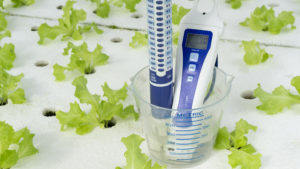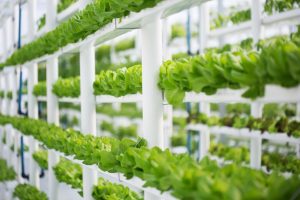Monitoring CO₂ for Growers and Greenhouses
CO₂ can drastically increase crop yields, but monitoring CO₂ (carbon dioxide) is a crucial component to success. An accurate monitoring system allows far greater control over your yields, and your harvest time. There are different methods for monitoring CO₂, although monitor devices and sensors are some of the best and most accurate ways to do it.
Why Monitor CO₂ levels?
Keeping an eye on your CO₂ levels can prevent mistakes that ultimately reduce your yields. Plants need a certain amount of carbon dioxide to live. If CO₂ levels drop below 200 parts per million (ppm), the vast majority of plants struggle to survive. If CO₂ levels are too high, plants also suffer, and have stunted growth and reduced yields, just as if they didn’t have enough.
Carbon dioxide is a key element in photosynthesis, the process that plants use to convert sunlight into usable energy, carbohydrates, and sugars. When plants are photosynthesizing, the ambient CO₂ of a grow room or greenhouse can quickly drop. While this won’t happen at night, it still needs monitoring throughout the day. This is especially true in greenhouses that have seals, in certain seasons and conditions.
To get the best crops, and the largest yields, there needs to be regulated, optimal levels of CO₂ in the grow area. Giving plants as much CO₂ as they can use allows them to photosynthesis as much as possible, provided they also receive enough light.
Because photosynthesis is how plants make their own food, optimal CO₂ levels allow them to produce more energy to put into their growth. As a result, plants grow bigger, grow more quickly, and can produce 30% higher yield or more.
How to Monitor CO₂
Carbon dioxide isn’t something you can see or smell. It isn’t like visible light, where you can poke your head in a room and see if the lights are on or not. Monitoring CO₂ is important for safety as well as optimizing your plants’ growth.
If you’re using CO₂ for plant growth, a simple carbon dioxide alarm won’t work. You need to be able to check up on exact CO₂ levels, and make sure they’re within the optimal range.
Equipment for monitoring CO₂ (carbon dioxide)
Most of the monitoring equipment for carbon dioxide goes under terms like monitors, meters, or sensors. Some of these are permanent fixtures in the greenhouse or grow room. These stationary sensors take measurements from one or more areas, and provide periodic (scheduled) readings, or real time, constant readings.
There are also handheld CO₂ monitors, which look like the small meters you can use to measure PAR or lux levels. Different pieces of equipment work better for different environments. However, for serious growers, commercial growers, and greenhouses, it’s more advantageous to have monitoring equipment constantly in the space. This ensures that any abnormality, or fluctuation, shows up right away, when you can still correct it without any problem.
Depending on the carbon dioxide dispensing system, you can also pair monitoring equipment with CO₂ regulation and control.
In-house sensors (or in greenhouse sensors, rather) are one of the most reliable ways to ensure your plants get optimal CO₂, at all times. Whether or not you use a control system, you should be checking up on your greenhouse’s ambient CO₂ frequently.
Frequently Asked Questions
Is it safe to use CO₂ for growing plants?
Carbon dioxide is absolutely essential for optimal plant growth. However, it can be toxic to humans and animals at high levels. CO₂ isn’t flammable, and at low levels, it doesn’t cause health issues in humans. However, you can’t see or smell it, and without a monitor, there’s no way to tell when it reaches toxic levels. Once CO₂ reaches about 3,000 ppm, it’s a serious health risk. If it reaches 5,000 ppm or higher, it’s at a fatally dangerous level. Keep an eye on your levels, and it’s perfectly safe to use.
Do plants need more CO₂ as they grow?
You can keep your CO₂ levels relatively stable as your plants grow. However, most growers tend to raise their CO₂ levels throughout the vegetative stage, because it allows plants to grow faster. In turn, this means plants mature in less time, and reach their flowering and fruiting stages earlier. Once plants reach this stage, many growers either maintain stable levels of CO₂, or begin to reduce them. This is because the plants have reach the ‘target’ stage where they produce the crops they were planted for.



